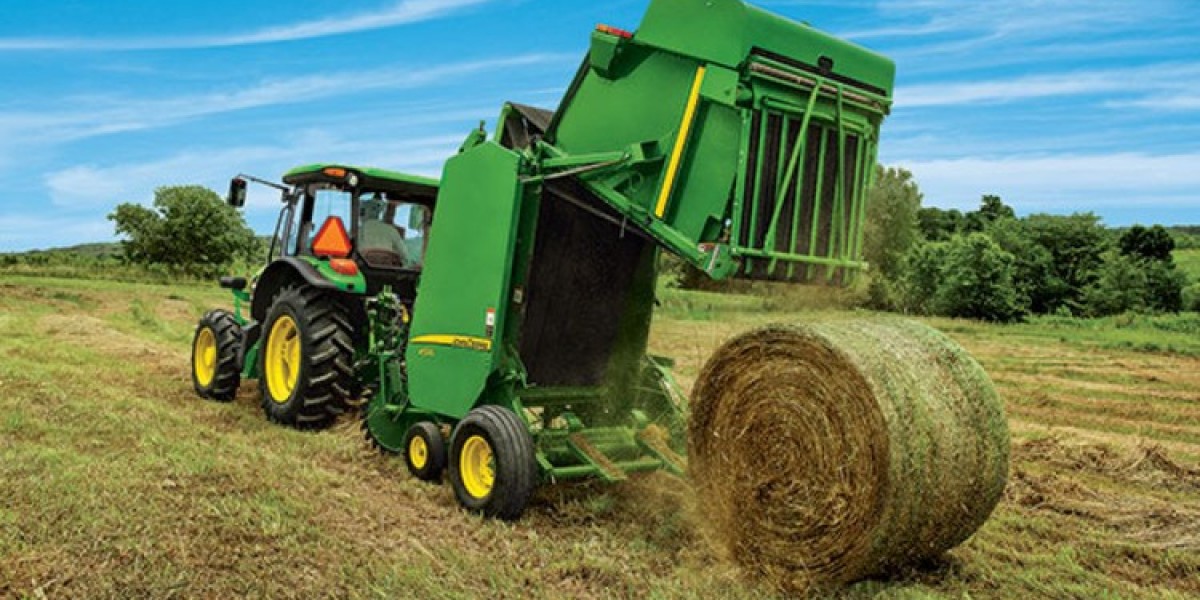The image of a baler as a simple hydraulic press is becoming obsolete. Today, this essential equipment is transforming into a connected data hub, integral to supply chain logistics and sustainability reporting. From agriculture to scrap metal, modern balers are not just processing materials; they are generating valuable intelligence on throughput, efficiency, and material value, enabling businesses to make smarter, more profitable operational decisions.
This transformation from a mechanical tool to an intelligent asset is a key driver of its adoption and innovation. According to Straits Research, the global baler landscape was valued at USD 6.31 billion in 2024 and is expected to grow from USD 6.86 billion in 2025 to reach USD 13.37 billion by 2033, growing at a CAGR of 8.7% during the forecast period (2025-2033). This growth reflects the added value that intelligent systems bring to material handling and recovery operations.
Innovation Focus and Competitive Analysis:
Innovation is centered on providing actionable insights and enhancing operational visibility.
Precision Agriculture: In farming, companies like John Deere (USA) and CLAAS (Germany) are in a tight race. The focus is on balers that can produce perfectly shaped, consistent bales with minimal loss. CLAAS’s rollomatic round balers, for example, feature laser-guided density control and telemetry systems that send bale weight and location data directly to the farm office, optimizing feed logistics and inventory management.
Waste and Recycling Intelligence: For the recycling sector, players like SSI Shredding Systems (USA) and Macpresse (Italy) are leading with fully automated baling lines. These systems can sort, shred, and bale material with minimal human intervention. The latest systems feature integrated weighing and tracking, allowing recycling facilities to accurately measure output by material type and value, directly impacting profitability.
The Rental and Service Model: Companies like Bramidan (Denmark) are emphasizing strong after-sales service and flexible rental options. This provides smaller businesses access to high-quality equipment without a large capital outlay, a trend that is expanding the addressable customer base beyond large corporations.
Regional Material Focus: The type of baler in demand varies by region based on local economies. In North America and Europe, high-volume cardboard and plastic balers dominate due to e-commerce waste. In agricultural powerhouses like Brazil and the United States, large square and round balers for hay and straw are most prevalent. In emerging economies in Asia, there is growing demand for mid-range industrial balers as formal recycling sectors develop.
Emerging Trends: Sustainability Reporting and Safety
A major trend is the use of baling data for sustainability and ESG (Environmental, Social, and Governance) reporting. Corporations under pressure to report recycling rates and waste diversion figures are using data from connected balers to automatically generate auditable reports, proving their progress towards sustainability goals.
Furthermore, enhanced safety features remain a critical area of innovation. Modern balers are equipped with advanced safety interlocks, light curtains, and emergency stop systems to protect operators. This is not only a regulatory imperative but also a key differentiator for manufacturers in a competitive landscape.
Recent News and Developments:
The industry's evolution is evident in recent announcements. John Deere acquired a leading ag-tech software company to further enhance its data analytics capabilities across its equipment line, including balers. In a strategic partnership, Signode and a major logistics firm announced a pilot program using IoT-enabled balers to track cardboard waste generation data across hundreds of retail locations. From Japan, news reports indicate a surge in sales of plastic balers, driven by new legislation mandating stricter recycling targets for businesses.
Summary: Balers are becoming intelligent, connected assets that provide critical data for operational efficiency and sustainability tracking. Innovation is focused on precision control, automation, and integrating with broader business intelligence systems.













